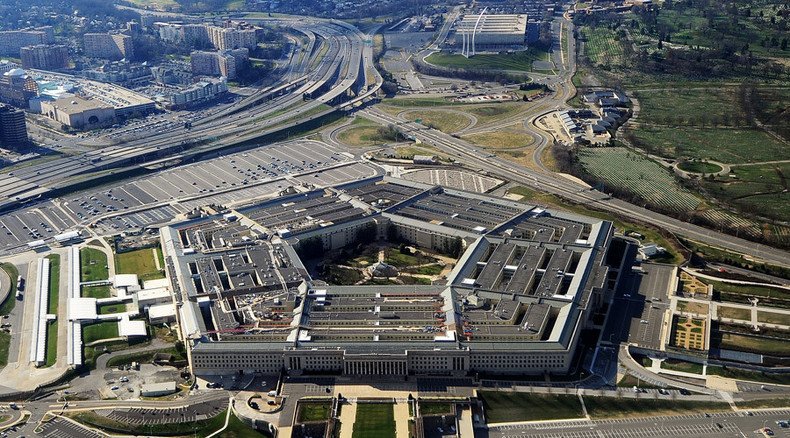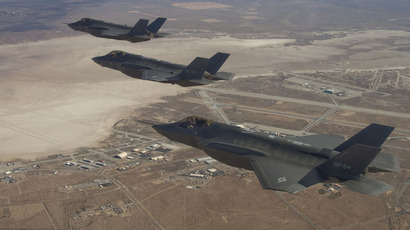Pentagon understated cost of new bomber by $25bn, blames ‘human error’

Very little is known about the US Air Force’s new long-range strike bomber (LRSB) – including, apparently, the cost. Facing questions over a $25 billion discrepancy in development costs, the Pentagon blamed “human error” and shrugged it off as a “mistake.”
The LRSB project is intended to replace the aging and expensive US bomber fleet by the mid-2020s, at the cost of $500 million per plane. Two aerospace conglomerates, Northrop Grumman and Boeing-Lockheed Martin, are bidding for the contract.
Last year, the Air Force told Congress that the 10-year cost of developing the bomber, between 2015 and 2024, would be $33.1 billion. This year, however, the estimate for 2016-2026 rose to $58.2 billion. The 76 percent increase prompted Representative Jackie Speier (D-California), ranking minority member on the House Armed Services oversight and investigations subcommittee, to ask about the $25 billion gap.
“This sudden 76 percent increase in estimated cost is alarming, because it raises questions about the management of a crucial program that lacks transparency, on which we cannot afford serious cost overruns, development errors, and reduced production numbers that would deprive the United States of one of its core military capabilities,” wrote Speier.
It would be pandemonium if the VA or IRS or really any other agency got something $25 billion wrong, Pentagon gets a free ride.
— Jacob Marx (@jacobemarx) August 31, 2015The response from Air Force Secretary Deborah Lee James only added to the confusion, by introducing another number to claim that the cost estimate hasn’t actually changed. According to James, the real figure was $41.7 billion all along.
“There has been no change in the costing factors over the last two years … it was a mistake. It was a regrettable mistake,” James said during a Pentagon press briefing last week. “It occurred in part because of human error and in part because of process error, meaning a couple of people got the figures wrong and the process of coordination was not fully carried out in this case.”
James said that senior officials have “counseled” the people involved, “tightened up” the process, corrected the price tag with Congress and double-checked all the other figures contained in the reports.
“The key thing is there has been no change in those cost figures,” she said.
Northrop Grumman was behind the B-2 ‘Spirit’ stealth bomber, manufactured between 1989 and 2000 at the cost of $737 million per plane. The total cost of the program stood at $45 billion in 2004. Only 16 B-2s are currently operational, and cost $135,000 per hour to fly, according to the Wall Street Journal.
Pentagon’s F-35 stealth jet can’t win dogfight – report http://t.co/kH0e0cqLmSpic.twitter.com/Y92sLeKSaB
— RT America (@RT_America) June 30, 2015Meanwhile, Lockheed Martin has been catching flak over the cost overruns that have plagued the F-35, a fifth-generation strike fighter produced in three separate configurations for the Air Force, Navy and the US Marine Corps. By 2011 estimates, the US government was going to spend $1 trillion on the fleet of F-35s – $382 billion to buy 2,443 aircraft, and another $650 billion in operating expenses. That was more than the entire GDP of Australia at the time ($924 billion), according to The Atlantic. The costs have only gone up since, even as the F-35 failed combat tests to a 1970s design currently in service.
Lockheed also produced the F-22A Raptor, the current US air superiority fighter, between 1997 and 2011. Fewer than 200 Raptors were made, at a cost of $150 million each and the overall program cost of $66.7 billion as of 2011.
The contract for developing the LRSB was supposed to be awarded in June or July, but the Air Force has already missed that deadline. Unconfirmed reports from defense sources speak of a September or October announcement.












